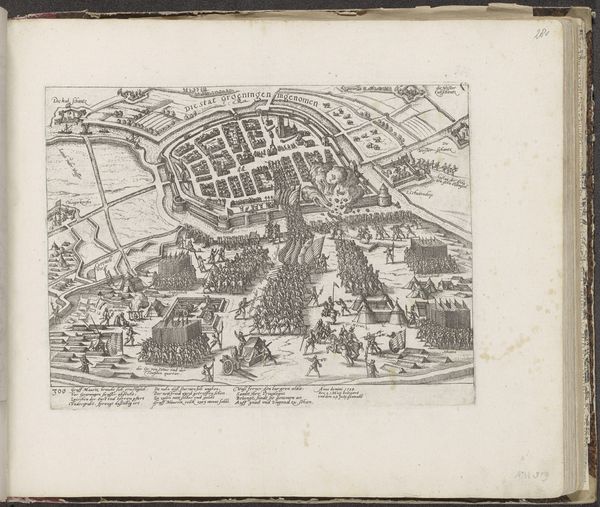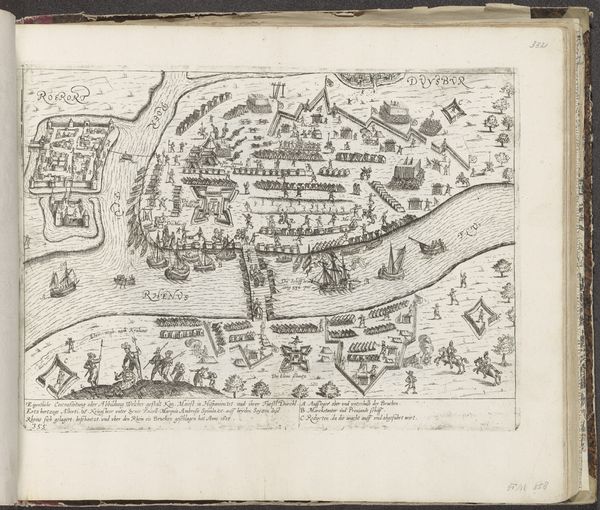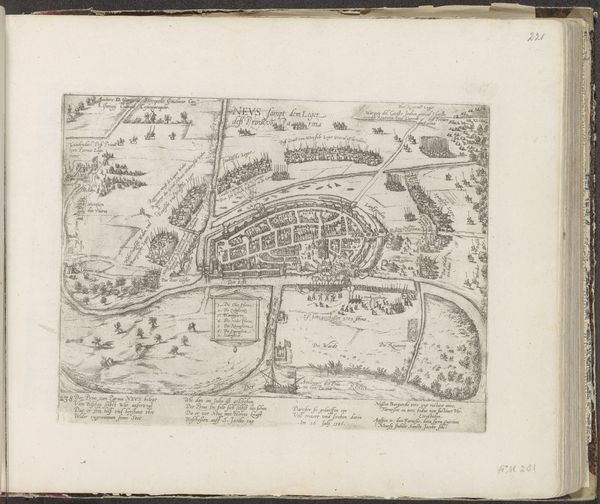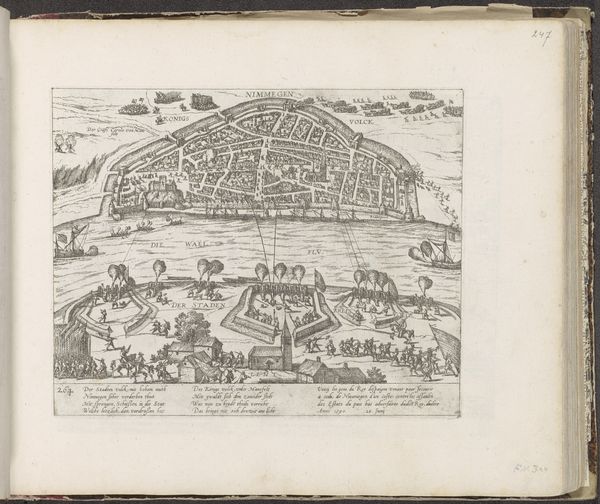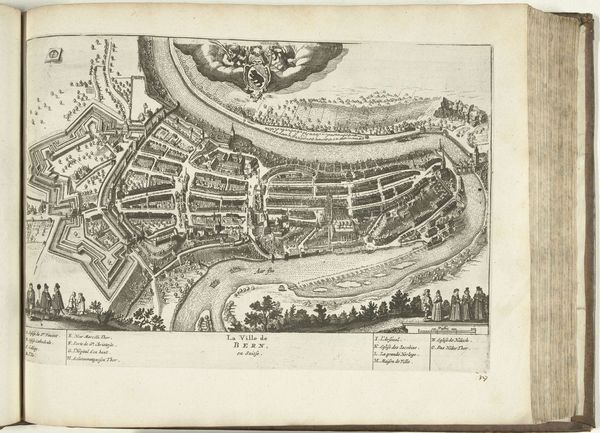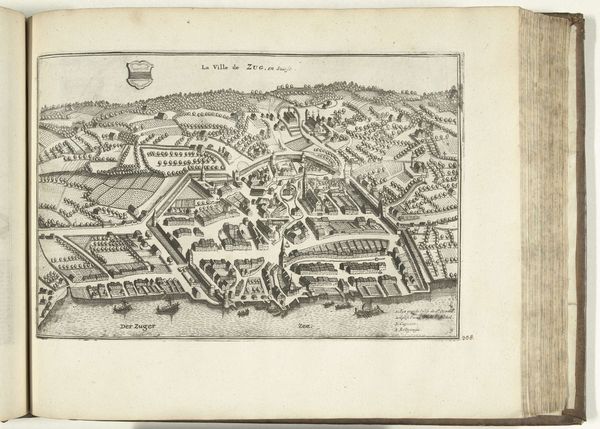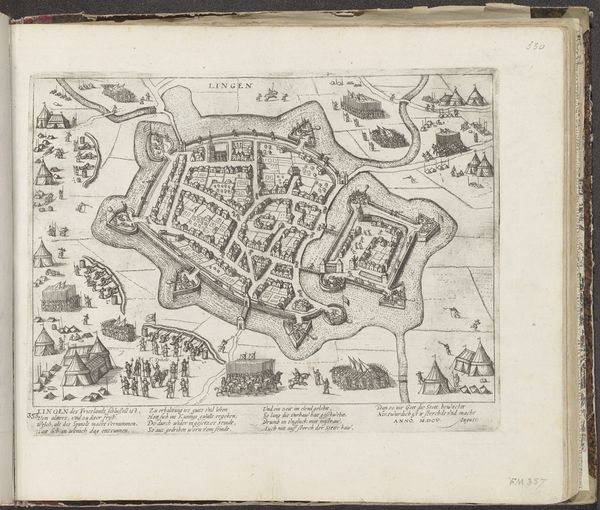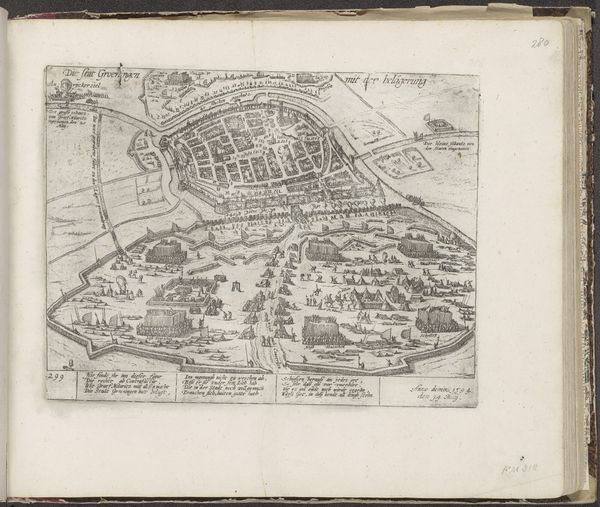
Geldern gaat door verraad over aan de Spanjaarden, 1587 c. 1587 - 1591
0:00
0:00
franshogenberg
Rijksmuseum
drawing, print, etching, ink, engraving
#
drawing
#
pen drawing
# print
#
etching
#
landscape
#
ink
#
cityscape
#
history-painting
#
northern-renaissance
#
engraving
Dimensions: height 215 mm, width 283 mm
Copyright: Rijks Museum: Open Domain
Editor: This is "Geldern gaat door verraad over aan de Spanjaarden, 1587," or "Geldern passes to the Spaniards through betrayal, 1587," by Frans Hogenberg, made around that time, using engraving, etching, and ink. The image has a kind of flat, map-like quality, but also manages to convey so much drama with all those tiny figures. What stands out to you when you look at this print? Curator: The drama lies in the iconography of betrayal itself. Notice how the city, rendered as an organized, almost utopian space, contrasts sharply with the chaos unfolding at its gates. The massing of soldiers isn't just a depiction of warfare; it's a symbolic invasion of order by disorder. The key lies in that open gate—what does it signify to you? Editor: It feels like vulnerability, like the city is being violated somehow. A loss of innocence, maybe? Curator: Exactly. Consider how cities in Northern Renaissance art often represented ideals of civic virtue and godly order. Hogenberg is exploiting that visual language to underscore the profound shock of treachery. The image becomes a powerful indictment of those who broke their oaths, a visual manifestation of broken trust that resonates through the ages. Do you notice any other repeated shapes? Editor: I see lines of soldiers and repeated house shapes within the city itself. Curator: Indeed. The repetition and variation, almost rhythmic. Consider then, how that repetition is abruptly disrupted where betrayal and violence occur. It draws the eye there, highlighting the horror, suggesting its lasting impact on the city's structure. Editor: That's fascinating; I never would have thought to look at it that way. I just saw a historical image. Curator: Seeing it as a carrier of cultural memory helps us understand why such images endured. They served not just to record events, but to transmit warnings, shaping collective identity through shared visual symbols. Editor: I'll definitely look at prints differently now, thinking about how the symbols speak to shared beliefs and values. Thank you.
Comments
No comments
Be the first to comment and join the conversation on the ultimate creative platform.

